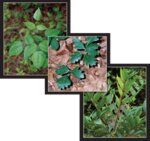For most of us, summer conjures up memories of leisurely months outdoors. Unfortunately, there’s poison ivy out there.
This item is available in full to subscribers.
We have recently launched a new and improved website. To continue reading, you will need to either log into your subscriber account, or purchase a new subscription.
If you are a digital subscriber with an active subscription, then you already have an account here. Just reset your password if you've not yet logged in to your account on this new site.
If you are a current print subscriber, you can set up a free website account by clicking here.
Otherwise, click here to view your options for subscribing.
Please log in to continue |


For most of us, summer conjures up memories of leisurely months of vacation time, which pretty much always means some kind of time spent outdoors.
Unfortunately for most of us, it also means there’s a chance you’ll get exposed to poison ivy – that infamous plant that torments countless outdoor enthusiasts every year.
So we spoke with Chestnut Hill’s Dr. David Kasper, a board-certified dermatologist who is now running the Dermatology and Skin Cancer Institute practice at Chestnut Hill Hospital (formerly retired Dr. Douglas Kligman’s office), to get the lowdown on what we need to know, and what we can do to protect ourselves.
First, how does poison ivy actually work? How can just brushing up against it result in such an unimaginable itch?
Poison ivy plants contain an oil called urushiol, an oily substance that causes an allergic reaction for those who are sensitive to it. You can develop susceptibility to poison ivy later in life even if you have not had issues with exposure when younger. The rash can become very itchy, irritated and develop blisters.
Unfortunately, the oils are easily spread by accident – when you sweat, touch the oil on your skin and spread it, or pet animals that have it on their fur. The sooner you recognize that you have been exposed, wash off the oils and seek treatment, the better off you will be.
The poison ivy rash lasts about three weeks and is bimodal. In other words, the severity of the rash (the peak) usually occurs around days seven to 10. However, when you think poison ivy is getting better, a few days later there will be another flare (the second peak) until the rash resolves.
The worst exposure is by accidentally burning poison ivy and inhaling it. This can be deadly.
Why does it seem like I’m so much more sensitive to it than others? Is my immune system weaker? Or maybe I’m low on some kind of vitamin?
As we mentioned before, the more you are exposed to poison ivy, the more likely that you will develop a quicker and more severe rash.
There is no way to strengthen your immune system to the effects of poison ivy, but I always recommend patients eat a well balanced diet and take multivitamins as directed.
There are any number of homemade remedies I’ve heard about: rubbing the rash with a raw potato, dousing it in a mixture of vinegar and baking soda. Someone even told me that bleach would work. If you happen to break out in a rash at night, and don’t happen to have calamine lotion on hand, are they any household items that actually do work?
Absolutely.
Start by taking a cool shower and get the oil off your skin by washing from head to toe. Also, make sure you immediately wash your clothing.
After showering, you can take oatmeal baths, or even baking soda baths. The recipe for baking soda baths is one cup baking soda to a full tub of bath water.
It is important to wash off all the oils before bathing, to help prevent spreading of any poison ivy oils.
You can also take oral antihistamines and apply topical steroids to affected areas. If the rash is severe then you will need to seek professional help.
I’m told that scratching poison ivy doesn’t actually make it spread – but I don’t believe that. I’ve had rashes that seemed to spread and get worse after scratching - whether or not I had gone back out to get a fresh dose of the ivy. What gives?
Many people believe that the rash or blisters are contagious, and can spread. In fact, you cannot spread or give poison ivy from those blisters or rash. You can ONLY spread poison ivy from the oils.
Any new rash you’re getting is a result of more contact with the oils, and the severity of the rash depends on how sensitive you are.
I had one patient who was exposed to poison ivy by working outside. They had cloth seats in their vehicle. The patient kept getting the same peculiar rash on exposed areas of his skin. This goes to show that the oils can penetrate fabric. We’ve even had patients who picked up the rash from their pet, who had gone outside and gotten it on their fur.
It seems like scratching actually makes it itch more. Is that true, or just my imagination?
Actually, there is a phenomenon called the “Itch-Scratch” cycle. We also see this in winter months with dry skin (eczema). That is why people call it the “winter itch.” That’s for another discussion, though.
The ‘Itch-Scratch” cycle suggests that when people have a tendency to itch, they scratch. However, the itching starts to intensify and patients need to scratch more to help “relieve” the itch. Eventually, we need to break that cycle to help with itch relief.
I’m going on a hike, it’s hot outside, and I’m not about to wear long pants. Is there anything I can do to protect myself from getting it?
This time of year it is always important to wear the appropriate clothing. Wearing long pants and shirts can help protect you from the harmful UV radiation to prevent sun damage and skin cancer, but also ticks and other exposures. You should at least wear hiking boots and tall socks. I recommend clothing that is UV protective if you do outdoor activities.
However, if you choose to wear shorts, etc., there are over-the-counter ivy block products that you can apply to yourself prior to your outdoor activity. I would recommend doing some research to see what would be appropriate for you.
But keep in mind that these are chemicals that you apply to your skin that also could cause a contact allergic dermatitis.
I know what poison ivy looks like when it’s mature. It’s got those three leaves, and can be shiny. But I think I’ve gotten it from plants that don’t look like that. What am I missing? What should I be looking for out on the trail?
The big three are poison ivy, poison oak and poison sumac.
Poison ivy can grow throughout the U.S. The leaves have three small leaflets that turn a reddish color in spring, greenish in summer and then to a yellow, orange and red color in the fall.
Poison ivy can grow as a vine or shrub. You may even see it growing up on trees in your backyard. There are no thorns, but white berries (which look like small pumpkins) may be present.
Poison sumac grows in the Northeast, Midwest and in the southeast. Its leaves have a characteristic row of paired leaflets with one leaflet and the end of the leaf. There are distinctive small black spots on the surface of these leaves. Poison sumac can grow as a small tree or tall shrub that can even be found in standing water. The drooping clusters of berries are colored yellowish to cream or green.
Poison oak usually grows as a vine in the Western U.S. and as a shrub in Eastern to Southern U.S. Poison oak leaves have three leaflets that are very similar to poison ivy. However, poison oak has rounded tips. Underneath these leaflets are fuzzy and lighter in color. Poison oak usually grows as a shrub with distinctive white or yellow berries.
David Kasper, DO, MBA is a Fellow of the American Academy of Dermatology and also of the American Osteopathic College of Dermatology.